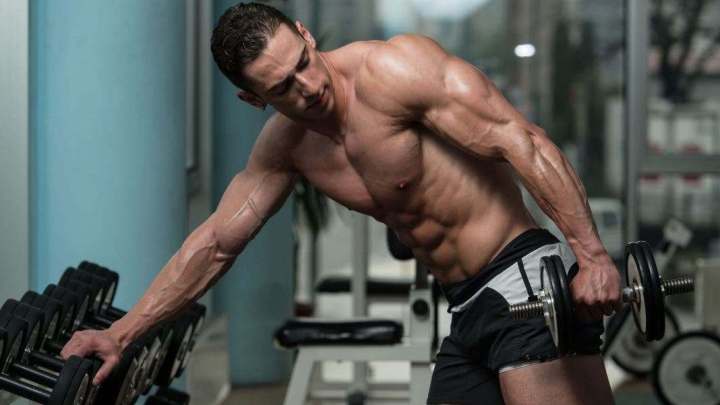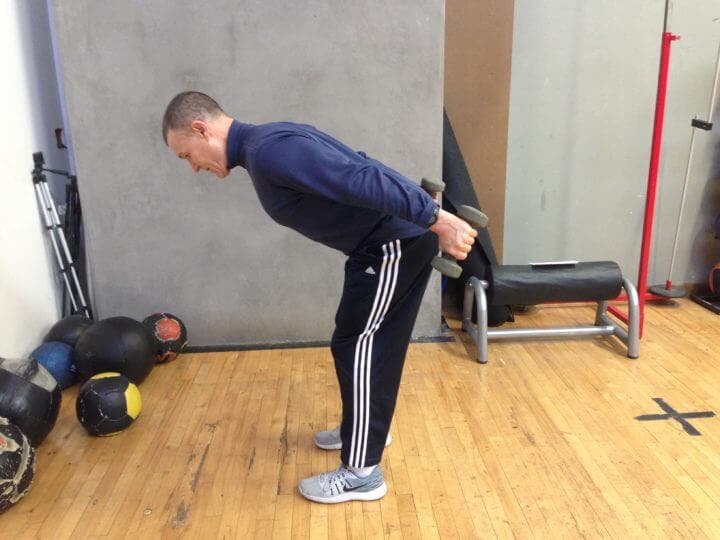Most people who train their arms do it for a simple reason: to have bigger and stronger arms. To do this, it is essential not to forget to do exercises to exercise the triceps .
To train your triceps, you need to know as well as possible the components of this muscle and the most appropriate exercises to meet your needs.
To learn more about the subject, we recommend you take a look at this guide to training the triceps , where you will find everything you need regarding training and conditions that must be met for the growth of said muscle.

Guide to training the triceps
1. Anatomy of the triceps
The triceps brachii is a very large muscle group, which is located in the back of the arm. In the vast majority of people, this muscle is made up of three large heads: the medial head, the lateral head and the long head, although in a few cases a fourth head has been observed.
The origin of the medial head is on the posterior medial side of the humerus; while the origin of the lateral head is on the posterior lateral side of the humerus. On the other hand, the origin of the long head is found in the infraglenoid tubercle of the scapula.
1.1 Nerves of the triceps
The 3 heads of the triceps are assumed to receive input from the radial nerve, which divides into four branches to innervate: the long head, the distal medial head, the lateral head, and the proximal medial head.
The radial nerve is a terminal branch of the posterior cord of the brachial plexus, while the axillary nerve is another. However, some research has found that the long head may be innervated by the axillary nerve, at least in some individuals.
Movements that strengthen the triceps
The triceps brachii is quite easy to work because of its large size. In fact, this muscle is activated during single-joint elbow extension exercises, such as the triceps extension, and in multi-joint shoulder flexion and elbow extension exercises, such as the bench press.
The triceps brachii, for its part, is a fairly large muscle that is made up of three heads. It is the only elbow extender; therefore, it is very likely that all three heads perform this same function during single or multi-joint exercises. The long head of the triceps brachii may also contribute somewhat to shoulder extension, although primarily in high degrees of shoulder elevation.

2. Regional anatomy of the triceps
There is little research on the regions that lie within the heads of the triceps brachii, as most studies have focused on the differences between the three heads. Some investigations carried out have found differences in the length of the arm of the internal moment between the proximal and distal regions of the medial head (Ettema, Styles and Kippers, 1998).
But even so, some strength studies have found that muscle growth can occur regionally within the triceps brachii, such that growth is greatest in the mid and proximal regions after training, with the triceps extension exercise (Wakahara et al., 2012). This suggests that some regions of the triceps brachii heads may be functionally separated from other regions.
It is likely that some of the heads of the triceps brachii are made up of separate regions and that some exercises can train certain regions more effectively than others, this is due to differences in muscle activation in the region. However, we currently have little information on these regions.

3. Internal moments of the arm
The triceps brachii has two one-joint heads, the medial and lateral heads, and a 2-joint head (the long head). All three heads contribute to elbow extension moments, while the long head contributes to shoulder extension.
Also, the contributions of each head to each movement are affected by the angles of the elbows and shoulders. Even so, the triceps brachii shoulder extension function is small and can be largely ignored.

4. Effects of shoulder angle
The contributions of the heads of the triceps brachii to elbow extension can be affected by shoulder angle. At low levels of shoulder elevation, the long head is the main contributor to elbow extension. However, as the shoulder angle rises, the medial and lateral heads gradually become more important.
In terms of training, this indicates that the long head can best be trained with exercises that involve the maximum force exerted with the arms at the sides (shoulder extension). In contrast, the medial and lateral heads can be better trained with exercises that involve the maximum force exerted with the arms raised (shoulder flexion).

5. Effects of the elbow angle
Studies have involved extension of the elbow at the medial moment of the triceps brachii arm, but the results are variable. In short, it seems quite likely that the triceps brachii elbow extension at the medial moment increases arm length with increasing elbow extension (Murray, Buchanan & Delp, 2002).
On the other hand, one study determined that all three heads reached maximum arm length at the internal moment at various points, with the long head reaching its peak at 30 degrees, the lateral head at 20 degrees, and the medial head at 15 degrees. with the result that the medial head shows the greatest internal moment of the arm in the full extension of the elbow (Garner and Pandy, 2001).
Simply put, we can increase the involvement of the long head of the triceps with elbow extension, exerting maximum force with the elbow flexed, in addition to increasing the involvement of the medial and lateral head.
The best way to exercise the long head of the triceps brachii is with exercises that need to exert a maximum force of elbow extension, with the arms at the sides of the body (shoulder extension), while to work the medial and lateral heads you must execute exercises that involve exerting maximum elbow extension force with raised arms (shoulder flexion), such as triceps extensions, especially against elastic resistance, which involves increased tension.

6. Working sarcomere lengths
The working sarcomere lengths of the triceps brachii do not appear to go beyond the plateau region of the length-tension relationship. When measuring between 30 and 120 degrees of elbow flexion, the long head of the triceps brachii largely remains on the plateau, while the lateral head works on the plateau and also in the early part of the descent.
This indicates that the triceps brachii is less likely to experience failure when working at short muscle lengths, because it is likely not to function well in the ascending limb. Additionally, only the long head of the triceps is likely to hypertrophy from stretching, and only when working on its final range of motion.
In terms of training, good use can be made of partial variations of the range of motion exercise when training the triceps brachii , as it will not allow insufficiency or hypertrophy as measured by stretching; therefore, it is likely to respond similarly to training.

conclusion
The triceps are the largest muscles in the arms. Each has 3 separate heads, which can be trained with different elbow extension exercises. The long head can be exercised with exercises such as standing tricep curls, while the medial and lateral head can be exercised with movements that involve maximum contractions with the shoulders being elevated.
Simply put, different exercises are needed to train the entire triceps area .

References
- Ettema, G., Styles, G. and Kippers, V. (1998). The moment arms of 23 muscle segments of the upper limb with varying elbow and forearm positions: Implications for motor control. Human Movement Science. doi: 10.1016 / S0167-9457 (97) 00030-4
- Garner, B. and Pandy, M. (2001). Musculoskeletal model of the upper limb based on the visible human male dataset. Computer Methods in Biomechanics and Biomedical Engineering. doi: 10.1080 / 10255840008908000
- Murray, W., Buchanan, T. and Delp, S. (2002). Scaling of peak moment arms of elbow muscles with upper extremity bone dimensions. Journal of Biomechanics . doi: 10.1016 / s0021-9290 (01) 00173-7
- Wakahara, T., Miyamoto, N., Sugisaki, N., Murata, K., Kanehisa, H., Kawakami, Y., Fukunaga, T… Yanai, T. (2012). Association between regional differences in muscle activation in one session of resistance exercise and in muscle hypertrophy after resistance training. European Journal of Applied Physiology. doi: 10.1007 / s00421-011-2121-y
